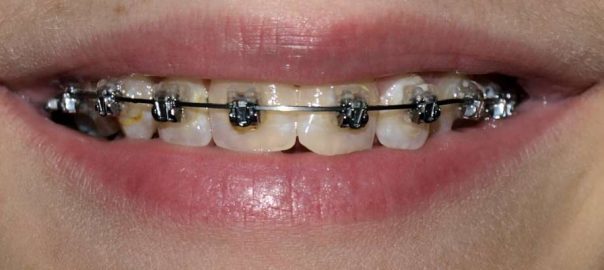
Reinvent your smile with speed braces
Dental braces are devices used by the dentist to align and straighten teeth and to position them in relation to a patient’s bite to improve dental health, function, and aesthetics. Conventional braces comprise of large metal or ceramic [tooth coloured] brackets, metal wire and a wide variety of elastics. Brackets are the small metal or ceramic modules that are attached to teeth. They help as guides to move the teeth and hold the archwire in place. These braces require a heavy archwire to link the brackets and exert pressure on the teeth. The archwire is a metal wire that is attached to brackets to move the teeth in the desired direction. Elastics are like rubber bands, that are used to hold archwires into brackets and to move teeth.
What are Speed Braces?
SPEED Braces have revolutionized orthodontics as these braces are an innovative way to straighten the teeth quickly and comfortably. They utilize a unique type of technology to optimize the straightening process. Speed braces are passive and completely tie-less. The reason they are called self-ligating is that they are attached to the wire without an elastic tie, and they allow the teeth to move with less friction as well as in lesser time, and hence are called speed braces.
Self-Ligating brackets are of two types:
- Passive – Passive brackets use a smaller archwire and are used at the beginning of treatment.
- Active – Active brackets use a much thicker archwire that delivers greater pressure to the teeth for useful results.
Some of the most popular brands of self-ligating braces are Damon, Speed System, and In-Ovation.
SPEED BRACES Vs TRADITIONAL BRACES
Self-ligating brackets in speed braces are made from the same materials as traditional braces but self-ligating braces are smaller in size typically 1/3rd the size of conventional braces and thus have reduced plaque build-up. The small size makes it easier to maintain oral hygiene during the orthodontic treatment. Moreover, their smaller size provides much less impingement on to facial tissues like cheeks and lips, resulting in greater comfort. Furthermore, it gives them an advantage of better aesthetic appearance.
Speed braces are also comfortable on the teeth as they provide more gentle movements due to less friction. They also need fewer adjustments compared to traditional metal braces and thus reduce the number of visits to the orthodontist. Metal braces usually take 1.5 to 3 years to straighten teeth completely, whereas Speedbraces can be as little as 3 months to about a year. Moreover, the elastic bands in conventional braces do not maintain proper force levels and need to be changed every 3 to 5 weeks whereas the super-elastic wires in speed braces maintain forces for longer intervals.
There have been claims made that speed braces have helped to shorten treatment time by up to six months when compared to traditional braces, but it is more or less dependent on the type of malocclusion being addressed.
To conclude, the implication of traditional or speed braces is dependent on the severity of the mal-aligned teeth. Hence, consultation with a good orthodontist at a dental clinic near you can help to determine whether conventional braces or self-ligating braces will work best for your set of circumstances.
By:
Dr. Ridhima Seth
Clove Dental
DISCLAIMER:Please note that the prices mentioned on this page: (a) present a range (depending upon the severity of the dental condition, the technology used in treatment, type of dental products used, etc.); (b) are true as on the date of this page and may change on a later date, in accordance with the standard company policy; (c) may be subject to standard aberrations or generalizations on account of the use of AI in general Google/internet search by you.Leave a Reply
Leave a Reply
Explore More Similar Posts
Explore More Blogs


Leave a Reply